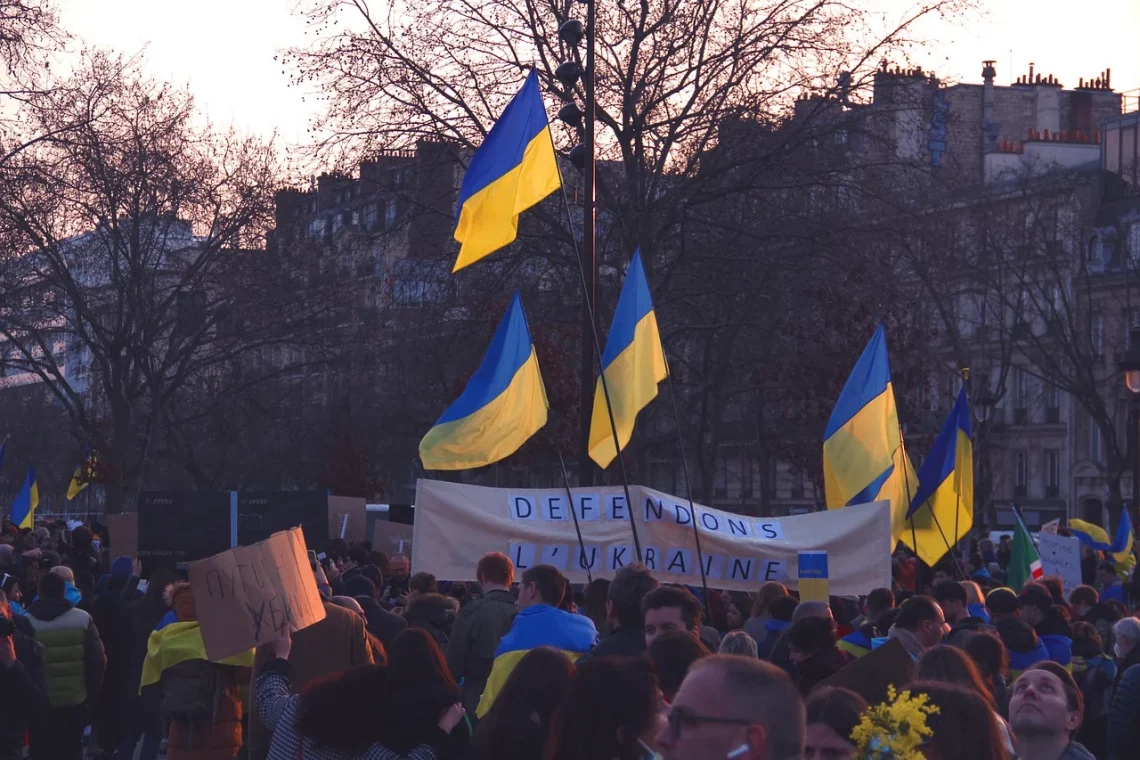
What does Putin want ?
« Let me emphasize once again that Ukraine is not just a neighboring country for us. It is an integral part of our history, culture, spiritual space, » Putin said, referring to the importance of Ukraine for Russia. The war between Russia and Ukraine has begun, with Vladimir Putin announcing the start of military operations at 04:00 on Thursday 24 February. Soon after, Russian planes began bombing major Ukrainian cities while ground troops advanced into the Donbas. Russian troops are advancing on Kyiv from different approaches after Putin said in a TV speech before dawn on 24 February that Russia could not feel « safe, develop and exist » by considering itself threatened. Airports and military headquarters were the first targets hit. Putin justified the military attack by explaining that he wanted to protect people subjected to genocide and aim at the ‘demilitarisation’ and ‘denazification’ of Ukraine. But there has been no genocide in Ukraine.
Nonetheless, what does Vladimir Putin want to put an end to this war ? For Putin, the decision to attack was due to fears of NATO’s eastward expansion. Russia sees Ukraine as a natural part of its sphere of influence: Putin himself has described Russians and Ukrainians as ‘one nation’ and the collapse of the Soviet Union in December 1991 as the ‘disintegration of historical Russia’. For the Russian president, modern Ukraine was entirely created by communist Russia while it is now a puppet state, controlled by the West. But Russia is not only focused on Ukraine and demands that NATO return to its pre-1997 borders. Putin wants Nato to remove its forces and military infrastructure from member states that have joined the alliance since 1997 and not to deploy « attack weapons near Russia’s borders ». In the days leading up to the start of the war, Putin made several specific demands of NATO in an attempt to defuse tension in Ukraine. The main demand is that former Soviet nations, Russia’s neighbors, such as Belarus, Georgia and Ukraine should never be part of NATO, especially Ukraine. Faced with this proposal, the US has already made it clear that NATO will never be able to prevent the possible admission of these countries, thus following an ‘open-door’ policy, but has guaranteed that Ukraine does not currently meet the democratic requirements for membership of the World Organisation. The second demand is that the deployment of military infrastructure in Europe be restored to the positions that existed in 1997 when the Russia-NATO Founding Act was signed. In justifying the recognition of the two separatist republics of the Donbas, Luhansk, and Donetsk, Putin also brought up historical reasons explaining that it was Lenin who created Ukraine. Recognition of the two republics would also have the direct effect of distancing Ukraine from NATO because it would make clear how difficult it is to control its borders. However, the motivations seem more economic than anything else given that 37 percent of Russia’s natural gas to the West passes through Ukraine (which has historically been Russia’s breadbasket).
The priority of the military campaign is to conquer the Ukrainian capital and install a pro-Russian government acceptable to Moscow. The minimum objective is instead to obtain the neutrality of the country (which would however fall within the Russian orbit) and prevent Ukraine’s entry into NATO through a friendly government. Putin has no desire to invade Ukraine permanently because of the difficulties he would encounter due to anti-Russian sentiment. However, he could ‘settle’ for annexing part of the Donbas territory to Russia, including the two territories that have proclaimed themselves republics and have been recognized by Moscow. Undoubtedly, such an operation would rewrite not only the map of Europe but also the power relations between states. For Putin, it would be proof that force is needed and that the West and NATO have neither the will nor the courage to respond to his offensives with weapons.
